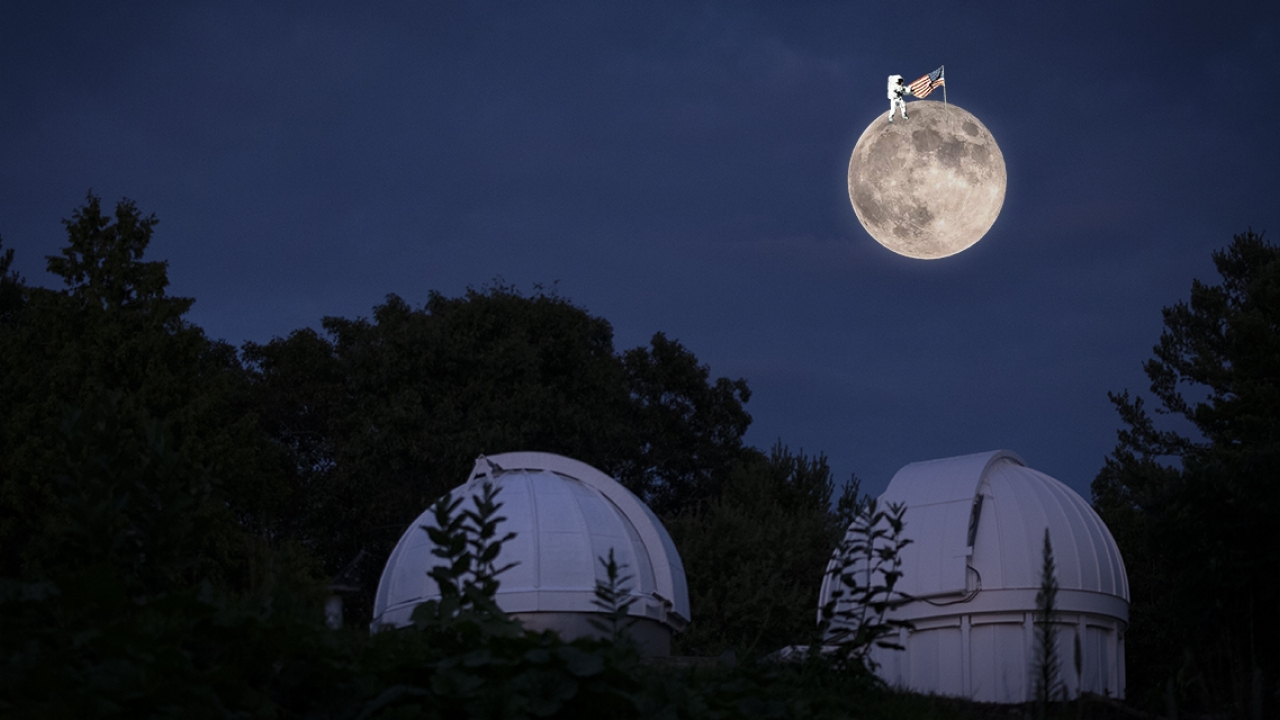Wellesley Physicist Researches the Moon Using Instrument Left by Apollo 11

When astronauts Neil Armstrong and Edwin “Buzz” Aldrin departed the moon on July 21, 1969, they left behind an instrument known as the Laser Ranging Retroreflector experiment. Since then, scientists have used it to study the dynamics of the Earth and the moon, as well as fundamental concepts such as Einstein’s theory of general relativity and the study of gravitational physics..
James Battat, associate professor of physics at Wellesley, and a group of his students are members of the research team APOLLO (Apache Point Observatory Lunar Laser-ranging Operation), consisting of faculty and students from Wellesley, Harvard, and the University of California, San Diego who have used the equipment to study the moon from the 3.5-meter telescope at the Apache Point Observatory in Sunsport, N.M.
Over the past 50 years, the accuracy of Lunar Laser Ranging has improved greatly thanks to modern laser and detector electronics. “One of the most compelling questions in physics is whether or not quantum mechanics and gravity can be united into a ‘theory of everything,’” said Battat, who along with other researchers will be conducting observations remotely via computer on the night of July 20 to mark the 50th anniversary of the Apollo 11 moon landing. “So far, though, general relativity and quantum mechanics have both passed all experimental tests with flying colors, meaning that there is no evidence that either theory needs modification. But ultra-precise measurements of gravitational systems could turn up discrepancies between theory and observation, which would help signal how to build a quantum theory of gravity.”
 The reflector device, an aluminum frame filled with 100 fused-silica glass retro-reflectors that resembles an egg crate, bounces pulses of laser light that are beamed to it through large telescopes on Earth, like the one at Apache Point. Laser beams are used because they remain tightly focused for long distances. Subsequent Apollo missions—Apollo 14 and 15—also deployed reflectors, as did two Soviet landers. All five sets of reflectors are still in use today.
The reflector device, an aluminum frame filled with 100 fused-silica glass retro-reflectors that resembles an egg crate, bounces pulses of laser light that are beamed to it through large telescopes on Earth, like the one at Apache Point. Laser beams are used because they remain tightly focused for long distances. Subsequent Apollo missions—Apollo 14 and 15—also deployed reflectors, as did two Soviet landers. All five sets of reflectors are still in use today.
The APOLLO team measures the round-trip travel time of each pulse with the precision of a few picoseconds (a picosecond is one trillionth of a second), which enables them to determine the distance between the Earth and the moon to within 1 millimeter.
“The very same dataset can be used to study the dynamics of the Earth and the moon,” said Battat. “Since the measurements are made from a point on the surface of the Earth to a point on the surface of the moon, any process that moves either of those two locations will show up in our measurements. For example, the Earth’s crust flexes and bends twice a day—just like the water tides—and we see that in our data, also. On the moon end, the orientation—tipping or tilting—of the moon provides clues about its internal composition, and the LLR data strongly suggest a surprising result: that the Moon has a fluid core.”
Photo (inset): Astronaut Buzz Aldrin aligns a lunar seismometer. Behind his right hand is the Laser Ranging Retroreflector array (LRRR) that he deployed earlier. Credit: NASA



